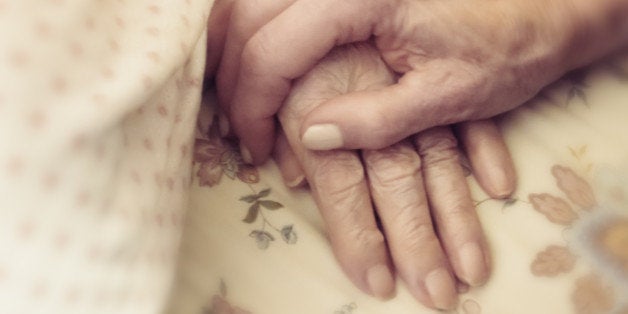
Imagine your aunt lives alone on a limited, fixed income, and you recently found out that her grandson had moved into the house she owns, locked her in a bedroom behind a steel-grated door, and began dealing drugs in the living room.
Sadly, this is a true story. Because of the crime occurring near and in Vicki Bastion's home in Hayward, California, the city was considering taking her home and institutionalizing her. Fortunately, her situation was recognized as a case of elder abuse and, thanks to the efforts of her niece, local Adult Protective Services officials and local law enforcement, the abuse ended and she was able to stay in her own home.
But there are thousands of other low-income older adults like Ms. Bastion who are victims of abuse every day in America. Despite progress in recent years and the passing of federal legislation to address the issue, the problem screams for more attention and action.
According to a 2010 study appearing in the American Journal of Public Health (AJPH), abuse among America's elderly is, unfortunately, prevalent. It manifests in many forms: psychological, physical, sexual, financial abuse and neglect all which threaten seniors in our community. The study found that 4.6 percent of participants experienced emotional mistreatment, 1.6 percent physical mistreatment and 5 percent experienced neglect.
The impact of elder abuse on low-income older adults is even more significant. In a recent study of poor older adults using legal assistance services in Atlanta, Georgia, researchers found that the rates of elder mistreatment among respondents (28.6 percent) were even higher than reported in the AJPH report. This same study, which appeared in the Western Journal of Emergency Medicine showed that elder mistreatment was more prevalent among older Hispanics/Latinos.
The finding in the Georgia report is similar to that of a 2012 door-to-door survey of low-income immigrant Latino elders in Los Angeles in which 17 percent of those surveyed said they had experienced some form of financial exploitation, 25% had experienced psychological abuse and 9 percent had experienced sexual abuse. The study, which appeared in the Journal of the American Geriatrics Society, also found that the prevalence of abuse was much higher in all areas of mistreatment than in any previous study.
While more research is needed into the causes and prevalence of elder abuse in this country, prevention of elder abuse is a growing movement, thanks in part to passage of the Elder Justice Act, which provided funding to support adult protective services and broad public education efforts. The law took eight years for Congress to enact, and in 2010, it did. However, funding for the law has been slow in coming.
Most recently, the Labor/HHS Subcommittee of the Senate Appropriations Committee approved, for the first time, $10 million for the Elder Justice Initiative. This wouldn't have happened without the persistence of the Elder Justice Coalition and thousands of advocates nationwide who worked for many years to get the appropriation this far. Now, it remains for the full committee to move this forward and for the full Senate and House to act on behalf of our nation's elderly.
Even absent funding from Congress, awareness of elder abuse is growing. Broad based coalitions such as the California Elder Justice Coalition or Michigan's Washtenaw County Elder Justice Coalition operate throughout the country, bringing together adult protective services, lawyers, social service and health care providers, academia, and others to develop strategies for identifying and preventing elder abuse.
Let's not let federal support for elder abuse prevention wither in another appropriations cycle. This must be the year Congress seizes the opportunity to take real action to protect our nation's elders.
